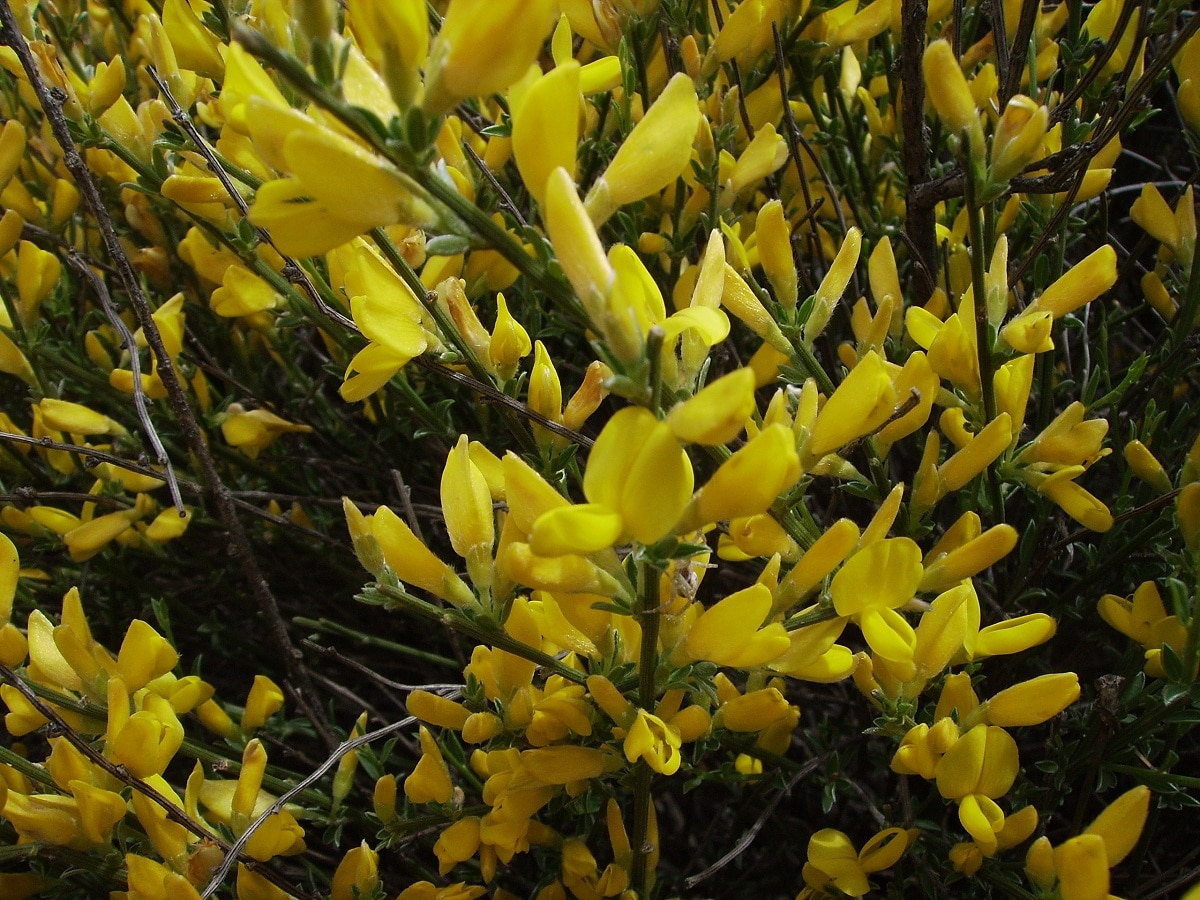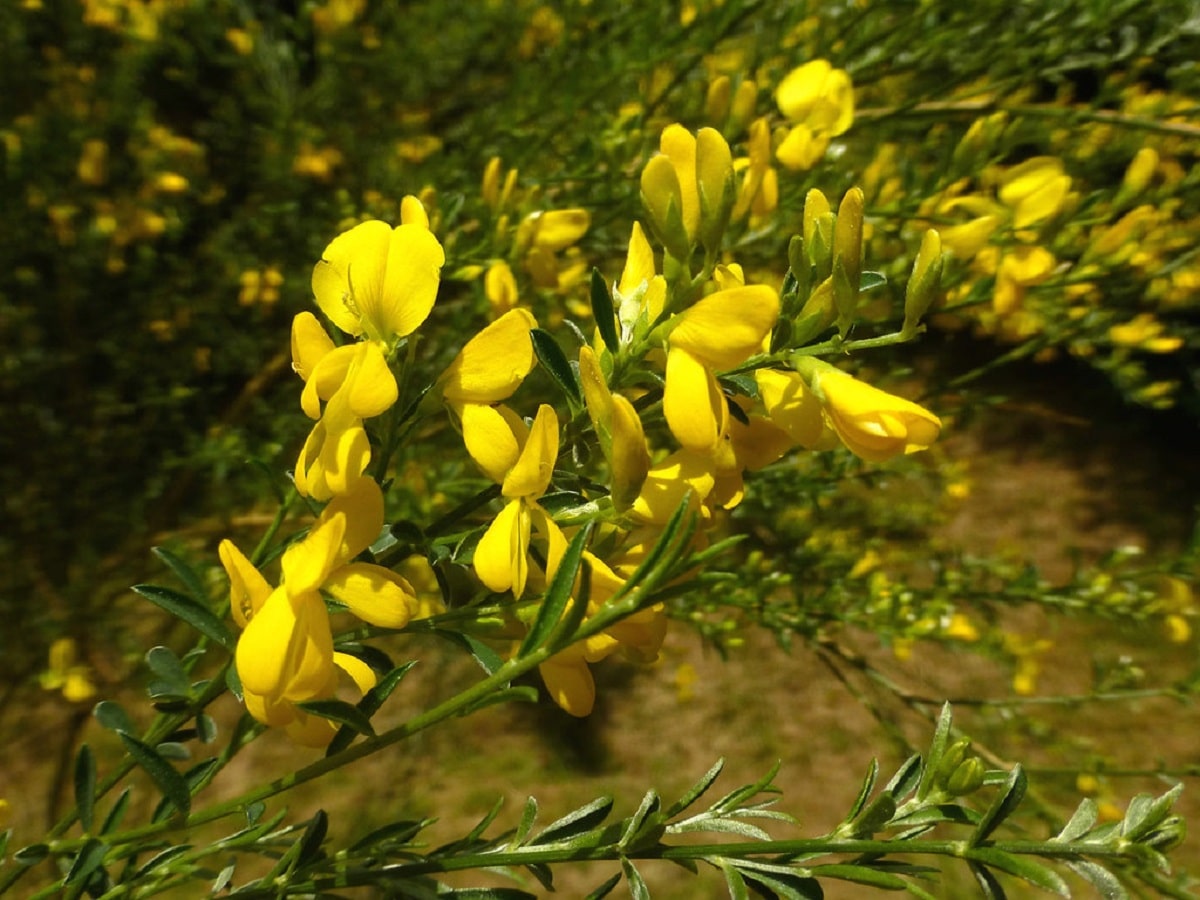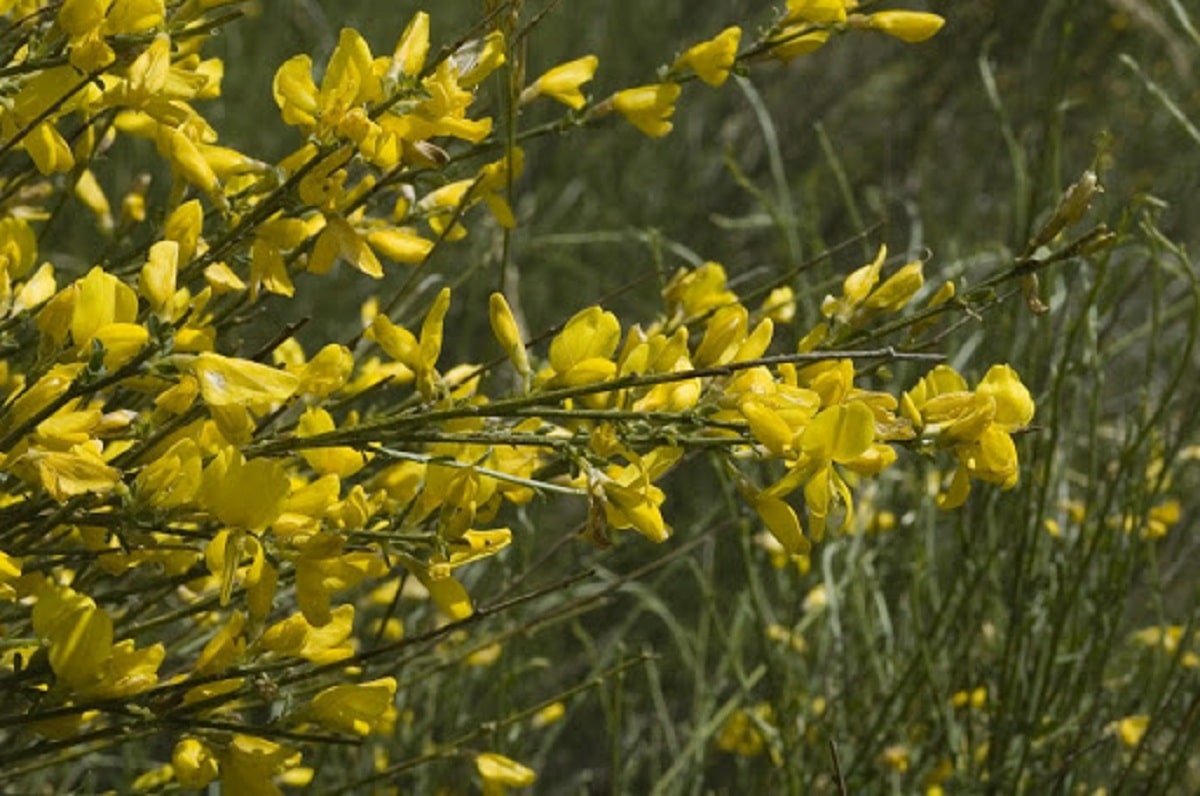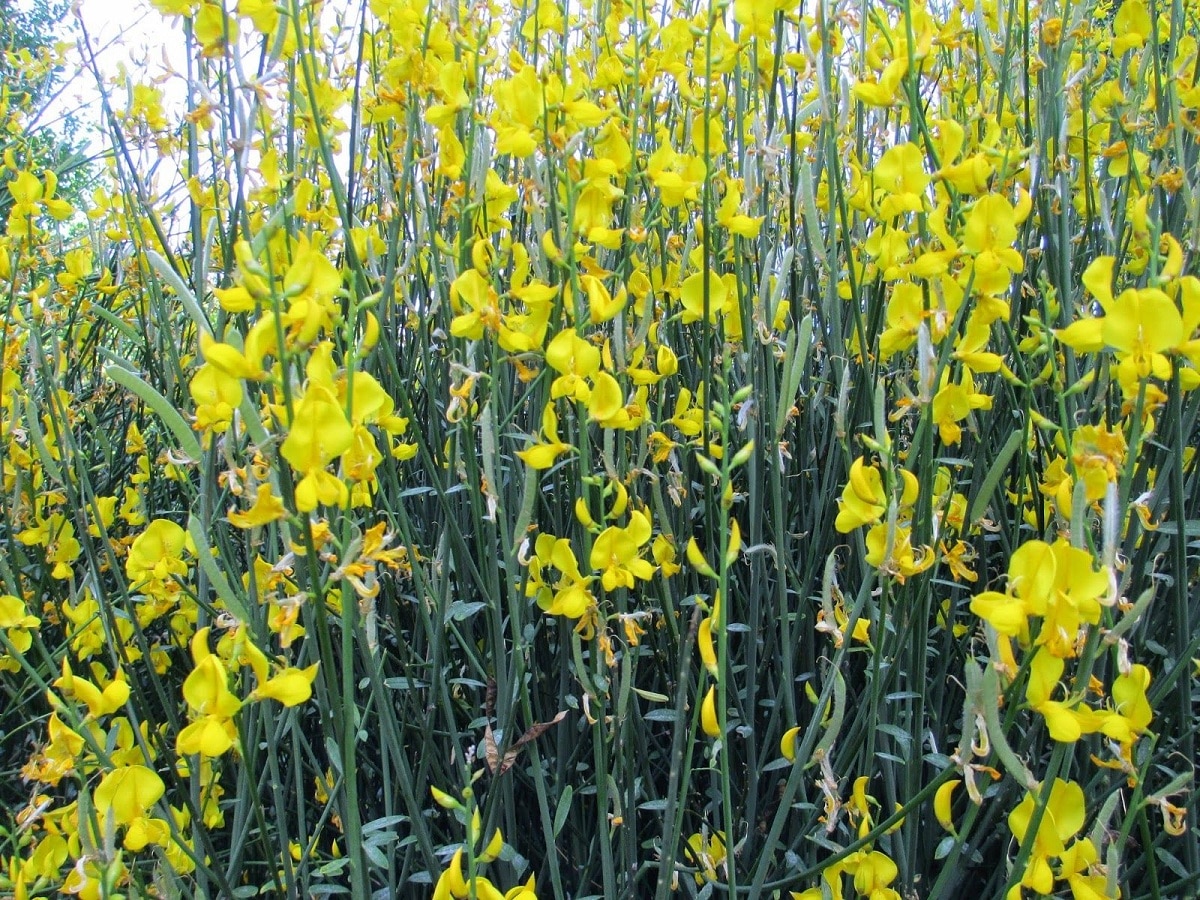
Today we are going to talk about a type of shrub that is known to belong to the legume family. It's about the Genista cinerea. It is also known by other popular names such as Hiniesta, Genista, Piorno, Retama cinderella, among others of a shrub-type phanerogam plant that is protected.
In this article we are going to tell you all the characteristics, biology and requirements of the Genista cinerea.
Key features

We are talking about a type of shrub that has evergreen leaves, so it is always green. It has very damaged stems up to two meters high when it reaches maturity. Its branches are of the junciform type since they take the form of a reed. The branches are greyish green with orange tones and longitudinally striated.. You could say that the green color is stormy. The branches that are old no longer have leaves and some knots can be seen from the thickened scars. These scars are those left by the leaves when they fell.
La Genista cinerea it has simple and whole type leaves. When fully grown, it can reach up to 1 cm in length and 3 mm in width. The flowering season occurs between the months of April and June and produces yellowish-yellow flowers. They are quite attractive and showy flowers for the action of pollinating insects on the head. All the structures of the flower are prepared to attract insects and to be able to extend their area of distribution through reproduction.
The flowers that it uses to spread in the territory are solitary in pairs or in groups of three flowers. Many of them grow on the branches of the previous year and have a somewhat short pedicel but it manifests itself quite well. The chalice has a somewhat silky texture and a silver color. It has a tubular shape and is bi-lobed, having the upper lip more cleft in two lobes and the inner longer. The corolla of the flowers is yellowish and has a yellow color with a length of 10-12 mm. The shape is so called as it looks similar to butterflies.
Once its flowers have fertilized, a legume is produced with an elongated shape and a length between 15 and 25 mm with a somewhat downy texture.
Aspects of the Genista cinerea

La Genista cinerea it is an endemic species found in the center and west of the Iberian Peninsula. We can find it in the accidental Mediterranean region and its abundance depends on the type of soil where it is found. The species has been developing in limestone or siliceous soils from the lower floor of the vegetation stages up to 1800 meters above sea level. We remember that there are different types of floors that encompass the entire distribution of plants depending on their requirements and their capacities to survive.
It is quite common to see it in places such as the Central System, Montes de Toledo and Sierra de Guadalupe in Spain, but also in northern Portugal. Shares natural habitat with other chemical plants of the degradation advantages of an oak forest such as Broom sphaerocarpa, Spartium junceum, Rhamnus lycioides, Crataegus monogyna, Rosmarinus officinalis...
It can be found more abundantly in siliceous soils than limestone soils. In these soils granites and quartzites abound. It is part of pine forests and high mountain bushes where they mix with brooms in more or less compact and closed masses. They do not usually spread over places that are too large.
Caring for the Genista cinerea

This plant can be had in gardens and urban parks since its flowers are perfect for decoration. It is very tolerant to drought and due to its ability to fix atmospheric nitrogen it can grow in quite poor soils. You do not need a soil that has so many nutrients so that it can develop normally. This makes it a very interesting plant from the point of view of landscape restoration. They are also being used quite frequently in sustainable gardening. This is due to the fact that it has very low requirements and it develops normally without much attention.
The location for this shrub to be is in full sun. It can survive well in poor, sandy-textured soil as long as it has good drainage. The only thing we must take into account so that this plant can live well is soil drainage. It does not tolerate waterlogging, as the roots can rot if it is waterlogged for too long.
Being a rustic plant, it does not need hardly any care. If you want it to generate many flowers you must have a temperate climate, since they do not usually withstand the cold well but the conditions of that day. It is usually planted for its amount of flowering and because it requires little care. If there is a variant somewhat weaker in the face of cold, it is usually grown in well-ventilated greenhouses. It suffers a lot when transplanted now, so you have to be especially careful about it.
The ideal temperatures for its growth is between 18 ° and 22 ° C. Irrigation must be a little more abundant during the summer, although this genus is not one that requires a large amount of water at any time of the year.
Maintenance and multiplication
To maintain and multiply this species, we must do some pruning tasks. Once the plant has flowered, the branches that have produced the flowers must be cut. In this way, we will always have the Genista cinerea with a shape and with sufficient density so that it returns to give a numerous flowering.
As for multiplication, to be able to extend it can be done using seeds in spring or cuttings in summer. We know that cuttings are much faster and we can have the plant that is alive in less time. The part that is old is better not to prune it since it does not sprout again.
I hope that with this information you can learn more about the Cinereous Genista and its characteristics.